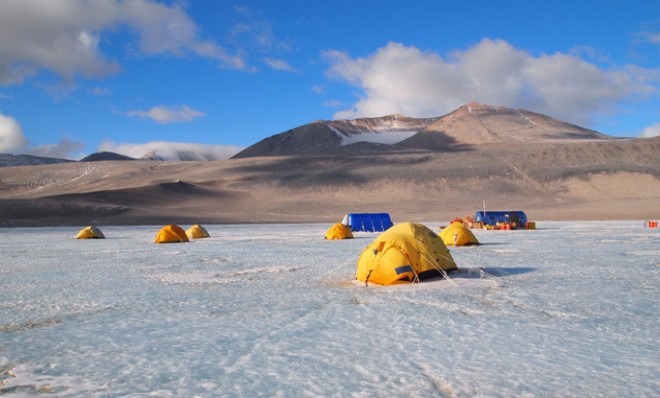Discovered in Antarctica: Ancient life under 60 feet of ice
Lake Vida is devoid of light and oxygen. That hasn't stopped life from finding a way


Lake Vida, a salty lake buried under a 60-foot-thick sheet of ice in Antarctica, has renewed scientists' hopes of finding alien life in space, even in the most inhospitable places. The lake, which has been completely sealed off from the rest of the world for thousands of years, is surprisingly teeming with microbial life. "By seeing what the boundaries of life are on Earth, that helps us when we go out and look for examples elsewhere," says Peter T Doran, a professor at the University of Illinois’ Earth and Environmental Science department. Here, a guide to this mysterious lake:
Where exactly is Lake Vida?
Victoria Valley in Antarctica. The lake is covered year-round by the thickest non-glacial ice on Earth, measuring at least 60 feet deep. This layer of ice has isolated the lake from the surface for 2,800 years, and as a result, the water contains no oxygen or light. It is seven times saltier than average sea water, which keeps the lake water from freezing completely despite its extremely cold temperature of roughly 8 degrees Fahrenheit.
The Week
Escape your echo chamber. Get the facts behind the news, plus analysis from multiple perspectives.

Sign up for The Week's Free Newsletters
From our morning news briefing to a weekly Good News Newsletter, get the best of The Week delivered directly to your inbox.
From our morning news briefing to a weekly Good News Newsletter, get the best of The Week delivered directly to your inbox.
But scientists discovered life there?
They sure did. After taking samples from the core of the ice, researchers were surprised to find previously unknown species of bacteria. The lake contains about one-tenth the amount of microbial life found in freshwater lakes.
How could this bacteria possibly survive in this lake?
Researchers aren't completely sure, but they suspect a chemical reaction between the salt water and the rocks below is producing hydrogen, which could serve as a fuel source. Whatever the answer, "the fact that things are alive in Lake Vida at all further extends the idea that where there is water, there is life," says Colin Schultz at Smithsonian.
A free daily email with the biggest news stories of the day – and the best features from TheWeek.com
What does this have to do with alien life?
If life can survive in Lake Vida's harsh conditions, imagine what that means in the hunt for life elsewhere in our solar system. "This provides us with new boundary conditions on the limits for life," says Doran.
Sources: Wired, Smithsonian, CBS News, Los Angeles Times
Jessica Hullinger is a writer and former deputy editor of The Week Digital. Originally from the American Midwest, she completed a degree in journalism at Indiana University Bloomington before relocating to New York City, where she pursued a career in media. After joining The Week as an intern in 2010, she served as the title’s audience development manager, senior editor and deputy editor, as well as a regular guest on “The Week Unwrapped” podcast. Her writing has featured in other publications including Popular Science, Fast Company, Fortune, and Self magazine, and she loves covering science and climate-related issues.
-
 How will China’s $1 trillion trade surplus change the world economy?
How will China’s $1 trillion trade surplus change the world economy?Today’s Big Question Europe may impose its own tariffs
-
 ‘Autarky and nostalgia aren’t cure-alls’
‘Autarky and nostalgia aren’t cure-alls’Instant Opinion Opinion, comment and editorials of the day
-
 Japan’s Princess Aiko is a national star. Her fans want even more.
Japan’s Princess Aiko is a national star. Her fans want even more.IN THE SPOTLIGHT Fresh off her first solo state visit to Laos, Princess Aiko has become the face of a Japanese royal family facing 21st-century obsolescence
